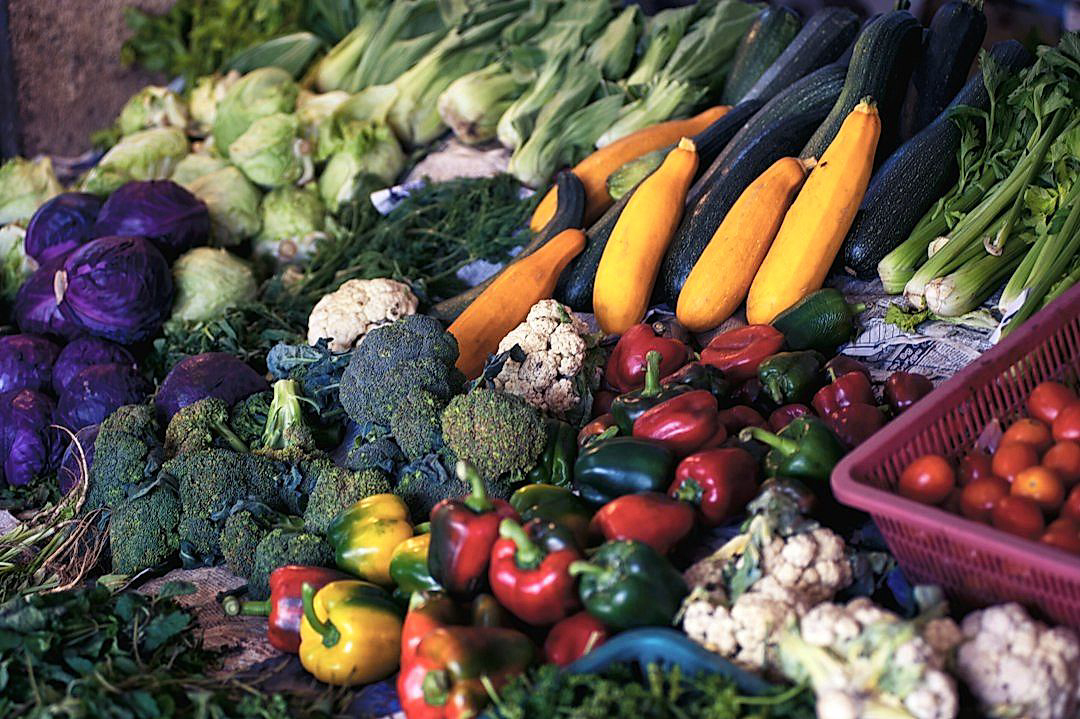In the world of agriculture, ensuring the safe and efficient transport of produce is paramount.
It is a complex task that faces several challenges, some predictable, others less so.
But like many other obstacles in the business world, these difficulties are not invincible; solutions are available when one knows where to look.
This article delves into the specific issues encountered on shipping routes for produce and suggests effective strategies to mitigate them.
We will explore matters of logistics, weather, compliance with import/export laws, and other factors that come into play.
Each hurdle will be examined, followed by proposed remedies that can enhance productivity and profitability.
Contents
- Challenges In Produce Shipping Routes And How To Overcome Them
- 1. Weather Disruptions: Implement Predictive Weather Tracking
- 2. Perishability: Invest in temperature-controlled shipping containers
- 3. Route inefficiency: Utilize modern mapping and GPS technology.
- 4. High fuel costs: Adopt fuel-efficient fleets and practices.
- 5. Labor Shortages: Train and Incentify Local Workforces
- 6. Regulatory hurdles: Prioritize knowledge of international trading laws.
- 7. Infrastructure Issues: Advocate for Transportation System Improvements
- The Bottom Line
Challenges In Produce Shipping Routes And How To Overcome Them
1. Weather Disruptions: Implement Predictive Weather Tracking
One of the most frequent and unpredictable challenges in produce shipping routes is dealing with weather disruptions.
Weather plays a critical role in the transport of goods, whether it is by land, air, or sea, potentially affecting the efficiency and speed of delivery.
Inclement weather such as storms, heatwaves, or extreme cold can cause major delays in shipping, wasting precious time and putting perishables at risk of spoilage.
The more severe these weather events, the higher the likelihood of incurring additional costs due to rerouting or the potential loss of perishable produce.
Whilst there’s no control over weather conditions, it is possible to mitigate its impacts on the produce shipping routes.
To do so, it’s crucial to implement predictive weather tracking into the logistics planning process.
By using advanced weather forecasting technology, shippers can model potential routes and identify the likely weather patterns ahead of time.
This information can then be used to plan the most efficient, safe, and weather-aware route, enabling a proactive response to potential adverse weather events.
It’s worth noting that having accurate weather data is just the first step.
The data needs to be integrated into the shipping route planning systems and processes to truly optimize shipping routes.
This integration will allow for real-time adjustments to the shipping route, minimising disruptions and ensuring the safe and timely delivery of perishable goods.
Implementing predictive weather tracking not only mitigates the risk of weather disruptions but also provides a competitive advantage in the increasingly challenging produce shipping industry.
It allows businesses to anticipate issues before they occur, prepare for potential pitfalls, and ultimately, deliver produce more efficiently.
By making predictive weather tracking an integral part of route planning, shippers can transform a major challenge into an opportunity for optimizing operations and enhancing business continuity.
While it’s true that there’s an initial investment in acquiring and integrating the technology, the potential to reduce losses and improve efficiency makes it well worth the expense in the long run.
Therefore, embracing technology and predictive analytics in weather tracking is a key step to overcoming the challenge of weather disruptions in produce shipping routes.
2. Perishability: Invest in temperature-controlled shipping containers
One of the most common challenges facing industry professionals in the fruits and vegetables shipping and trading sector is the perishability of goods.
This problem is compounded by the fact that produce shipping often involves long distances and transit times.
It is critical, therefore, for businesses in this sector to devise strategies and solutions that can effectively combat product perishability, thereby minimizing losses and maximizing returns.
The key to overcoming this challenge is through the investment in temperature-controlled shipping containers.
Temperature-controlled shipping containers offer an efficient solution to the perishability problem, as they are specifically designed to maintain the temperature at optimum levels for the preservation of fresh produce.
This investment can significant improve the shelf life of fruits and vegetables and ensure they reach their destination in the best possible condition.
Moreover, these containers not only regulate temperature but also control humidity levels and gasses within the storage environment, all of which can impact the freshness and quality of the products.
Another significant advantage of temperature-controlled shipping containers is their scalability.
These containers come in various sizes and capacities, thereby providing businesses with the flexibility to ship different volumes of produce depending on their needs and demands of the market.
By leveraging these containers, businesses can also meet the increasingly strict food safety standards, as they minimize contamination risks during transit.
Therefore, businesses operating in the produce shipping industry should consider allocating a significant portion of their capital investment towards temperature-controlled shipping facilities.
Adoption of this strategy can significantly contribute to the reduction of losses, increased profits and improved customer satisfaction.
Long-term benefits of this strategy include establishing a reputation for delivering high-quality products consistently, and gaining the trust of customers.
Despite the initial high capital investment, the benefits, in the long run, will significantly outweigh the costs.
All in all, the investment in temperature-controlled shipping containers stands out as an efficient strategy that businesses in the produce shipping industry can adopt, to effectively address and overcome the challenge of perishability of goods during transit.
3. Route inefficiency: Utilize modern mapping and GPS technology.
One of the most common challenges encountered in the transportation of produce is route inefficiency.
Produce carriers often struggle with finding the most direct, traffic-free, and hazard-less route to their destination.
This can lead to delayed deliveries which not only increase transportation costs, but also puts the perishable product at a risk of deterioration.
However, this seemingly daunting problem has a feasible solution in the form of modern mapping and GPS technology.
The advent of technologically advanced mapping and GPS tools provides an unprecedented aid for shippers, enabling them to plot out optimal routes, anticipate possible roadblocks, and adjust plans swiftly in real-time.
These tools offer features such as live traffic updates, road condition warnings, and alternate routes, thus enhancing the efficiency of the shipping routes.
Furthermore, they help in predicting delivery windows more accurately, allowing logistic companies to keep their clients well-informed in advance about the expected delivery time.
Modern GPS technology can also aid in tracking vehicles, ensuring safety and security.
For instance, in case of unforeseen circumstances like breakdowns, accidents, or mishaps, real-time tracking allows shippers to respond promptly and take necessary measures.
Moreover, this technology can be used to improve fleet performance by monitoring driver behavior, vehicle idling times, and fuel consumption which eventually leads to cost savings.
Thus, incorporating state-of-the-art mapping and GPS technology in their workflow is no longer an option, but a necessity for produce carriers for overcoming the challenge of route inefficiency.
However, a mere deployment of this technology is not sufficient.
The real effectiveness stems out from the ability to train staff on its use, and to interpret and leverage the information it provides.
Equally important is the necessity to keep the systems up-to-date, in order to benefit from the latest features and improvements.
In summary, modern mapping and GPS technology have evolved as powerful resources in overcoming the challenge of route inefficiency in the transportation of produce, revolutionizing the traditional ways of shipping operations.
4. High fuel costs: Adopt fuel-efficient fleets and practices.
High fuel costs remain a substantial hurdle in the management and operation of produce shipping routes.
The volatility of fuel prices directly impacts the cost of transport, complicating budget projections and hindering effective financial planning.
However, adoption of fuel-efficient fleets and practices presents a solution to this ongoing issue.
Switching to more energy-efficient vehicles not only reduces fuel consumption but also has the potential for significant cost savings.
Fuel-efficient vehicles might involve a larger upfront investment, but the long-term reduction in operational costs justifies such expenditures.
Another significant step towards fuel efficiency includes streamlining operations with route optimization to help minimize fuel consumption.
Modern GPS and mapping technology can help determine the most efficient routes, reducing drive time and, subsequently, fuel usage.
Maintaining regular vehicle maintenance and ensuring proper tire inflation can also increase fuel efficiency.
Decreased engine idling time, efficient driving techniques, and weight management can further help to manage fuel consumption.
On the organizational level, providing training and incentives for drivers to follow fuel-efficient practices can encourage efficient use of fuel.
Transport companies can also consider using alternative fuels or hybrid vehicles which offer the double advantage of reducing fuel costs and lowering emissions.
This shift not only makes economic sense but is also a sustainable and environmentally friendly choice.
Furthermore, investing in telematics systems can provide real-time data on fuel consumption, helping to identify problem areas and solutions.
These strategies can collectively contribute to significantly lowering high fuel costs and overcoming this challenge in produce shipping routes.
While these practices require planning and action from transportation businesses, the promise of increased profit margins and environmental stewardship heavily outweigh the initial efforts.
5. Labor Shortages: Train and Incentify Local Workforces
One of the major challenges in produce shipping routes is labor shortages.
This problem is most acute in major transport hubs where there is a high demand for skilled and unskilled labor.
One efficient solution to this problem is to train and incentivize local workforces.
Training local workforces provides a steady supply of labor, reduces reliance on migrant labor, and fosters economic development in local communities.
Companies can also consider adopting apprenticeship programs that offer on-the-job training to interested locals.
This approach not only provides the necessary skills but also creates a sense of ownership and commitment among the workforce.
Instead of relying on temporary workers who may not have familiarity with the job, continual training programs ensure that the workforce is familiar with the operations and can operate efficiently.
Additionally, incentives such as higher wages, better working conditions, and career development opportunities can help attract and retain local workers.
Attracting the local workforce also means that the company has a greater pool of labor to choose from and can replace those who leave more easily.
It’s important for companies to ensure that working conditions are good, the workforce is treated fairly, and they adhere to local labor laws.
This can also serve as an investment in the social and economic development of local communities, uplifting their standard of living and actively contributing to social cohesion.
Government support and policies also play an important role in supporting training and incentivizing schemes.
They can provide subsidies, tax benefits or other forms of financial aid to companies who are committed to these practices.
Partnerships with educational institutions can also be crafted to create training programs tailored to the needs of the industry, forming a sustainable talent pipeline.
Thus, tackling labor shortages by training and incentivizing local workforces may seem like a daunting task, but with innovative strategies, government support, and a commitment to fair work practices, it is a challenge that can be overcome.
6. Regulatory hurdles: Prioritize knowledge of international trading laws.
When it comes to overcoming the challenges in produce shipping routes, one significant hurdle stands out: Regulatory hurdles.
These regulatory barriers largely stem from international trading laws that importers and exporters of agricultural produce must adhere to.
Understanding these legal requirements and implementing measures to fulfill protocol is crucial to ensuring smooth and lawful produce shipping.
The laws governing international trade are vast and complex, encompassing aspects such as customs regulations, import restrictions, and quarantine rules.
In many cases, import and export regulations are dictated by bilateral or multilateral trade agreements between different countries.
These agreements can dramatically alter the landscape of produce shipping, introducing new barriers or eliminating existing ones and thus directly influencing trade routes.
Precise knowledge of these international trading laws ensures that businesses can map out the most efficient, least restrictive routes for their produce shipments.
Furthermore, this understanding can help enable businesses to predict potential regulatory changes that may affect their shipping routes in the future.
For example, if a business knows that a certain country is looking to tighten its restrictions on pesticide levels in agricultural produce, they can plan accordingly by seeking alternative routes or adjusting their produce treatment methods.
While it might be tempting to cut corners or ignore certain regulations for the sake of expedience or cost savings, non-compliance can result in hefty fines, legal penalties, and damage to a business’s reputation.
Having a designated team or individual whose role is to stay abreast of current and changing regulatory standards can be an invaluable asset for any business in this industry.
Investing in reliable legal advice and guidance is yet another method businesses can use to navigate this challenging aspect of produce shipping.
In the realm of international trade, uncertainty is a given, but prioritizing knowledge about regulatory requirements can significantly reduce this unpredictability and facilitate smoother produce shipping operations.
Ultimately, overcoming regulatory hurdles is not about finding ways to circumvent the law, but rather about gaining a deep and thorough understanding of international trade regulations and using this knowledge to navigate the complex realm of global produce shipping.
Knowledge after all, is indispensable power in this context.
7. Infrastructure Issues: Advocate for Transportation System Improvements
The challenges in produce shipping routes often extend beyond the control of individual companies, reaching into the realm of infrastructure issues.
These challenges could include insufficient road networks, lack of adequate port facilities, or even the lack of an efficient logistics system.
Overcoming these hurdles often requires strategic advocacy for transportation system improvements.
This advocacy must be targeted towards policy makers, industry regulators, and other key stakeholders who are in a position to actualize these much-needed changes.
Companies involved in produce shipping can leverage their industry knowledge to offer solutions and suggestions for infrastructure improvements.
They can join or even form advocacy groups that focus on the transportation and logistics sector.
Through these groups, they can then engage lawmakers and regulators, educating them on the significance of efficient, dependable infrastructure to the governing of produce shipping processes.
It’s important for these companies to understand that their participation in this advocacy is not merely about solving their immediate shipping problems.
Instead, it is a long-term strategic investment that can potentially reshape the future dynamics of the industry.
Take, for instance, the role of infrastructure in lowering shipping costs.
Better roads reduce vehicle wear and tear, increase fuel efficiency, and reduce chances of damage to the produce during transportation.
In the long run, this can translate to significant savings for produce shipping companies.
Improved port facilities can also speed up the shipping process, allowing produce to reach its destination faster and thus reducing the risk of spoilage.
Efficient logistics systems, on the other hand, can ensure better tracking of shipments, improved scheduling, and real-time adjustments to changing situations.
Therefore, successful advocacy for transportation system improvements can lead to an overall improved efficiency in produce shipping, ensuring fresh produce reaches consumers promptly while reducing associated costs.
It is crucial to recognize that such advocacy often requires collaboration and a unifying voice.
Produce shipping companies must therefore try to foster good relationships with other players in the industry, collaborating on shared goals towards improved transportation infrastructure.
This goes a long way in addressing the core challenges in the produce shipping routes, making it easier for fresh produce to reach consumers regardless of where they are located.
The Bottom Line
Advancements in technology and targeted strategic investments can significantly address critical challenges in the logistics sector.
Predictive weather tracking will aid in managing weather disruptions, while temperature-controlled shipping containers will conserve the quality of perishable goods.
Modern mapping and GPS technologies will provide efficient routes, and fuel-efficient fleets and practices minimize fuel costs.
Enhancing local workforce skillsets and offering attractive incentives can alleviate labor shortages.
Profound knowledge and compliance with international trading laws will help navigate regulatory hurdles.
Moreover, concerted advocacy for transportation system improvements will address prevailing infrastructure issues.
Overall, these measures will not only enhance operational efficiency but also invigorate the industry’s growth and sustainability.




